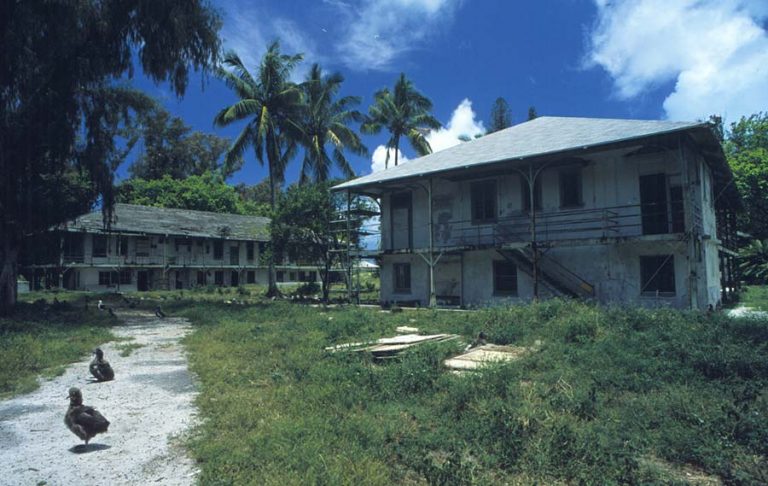So beginnen Geschichten, die zu fantastisch klingen, um wahr zu sein. Und doch…
a corporate conglomerate, intent on spanning vast gulfs of space, finds itself engineering an entire ecosystem into existence on a remote stopping-off point, turning bare rocks into an oasis, in order to ensure that its empire can expand. […] This could be the premise of a Hugo Award-winning interplanetary space opera—or it could be the real-life history of the Commercial Pacific Cable Company.
The Company was the first to lay a direct submarine cable from the United States to East Asia, but this required the use of a remote atoll, 1,300 miles northwest of Honolulu, called Midway […] At the time, however, there was barely anything more there than “low, sandy island[s] with little vegetation,” considered by the firm’s operations manager to be “unfit for human habitation.” The tiny islands—some stretches no more than sandbars—would have been impossible to use, let alone to settle. [So] the Cable Company and its island operations manager “initiated the long process of introducing hundreds of new species of flora and fauna to Midway.”
Das U.S. Fish & Wildlife Service hat ein paar Informationen mehr zum Terraformingprojekt der Pacific Cable Company und der Rolle des Midway-Atolls. Nicht viel, aber genug, um einen weiteren Reisewunsch auf meine Liste zu setzen. Deutlich mehr zum Thema, wenn auch noch lange nicht befriedigend, findet man auf einer Seite namens „Atlantic Cable„. Den ursprünglichen Hinweis auf all das habe ich im Bldgblog gefunden.
Ich belasse es bei diesem Hinweis auf mehr. Wer sich, wie ich, nahezu grundlos stundenlang mit Inseln und Atollen mitten im Pazifik beschäftigen kann, dem wünsche ich viel Vergnügen.
